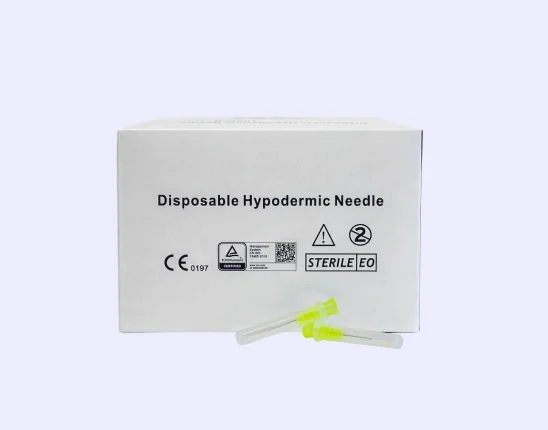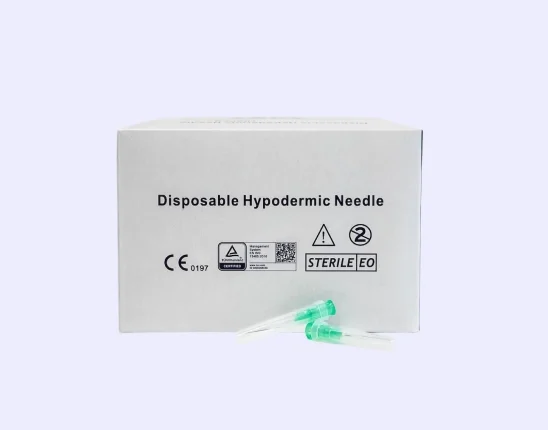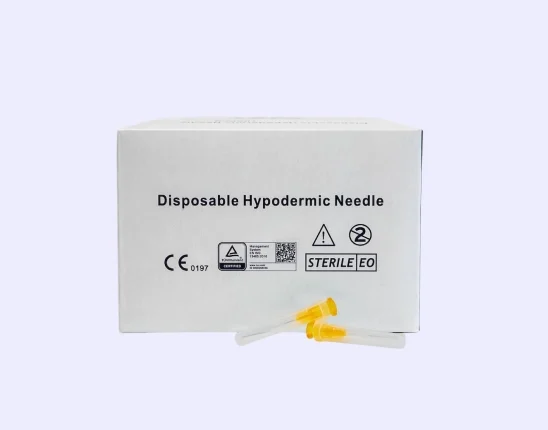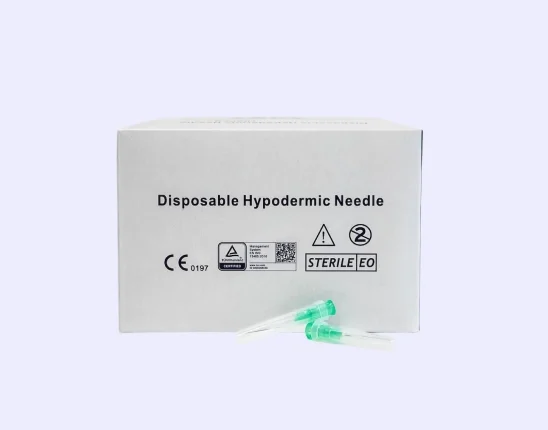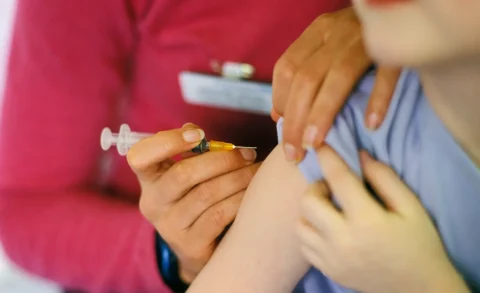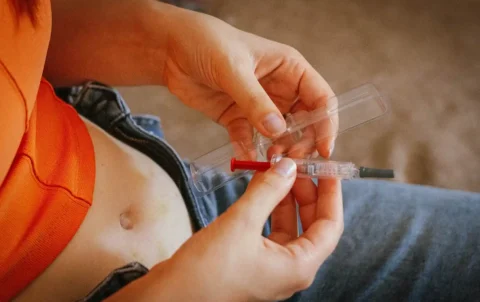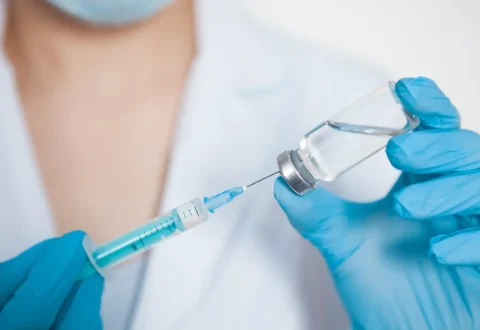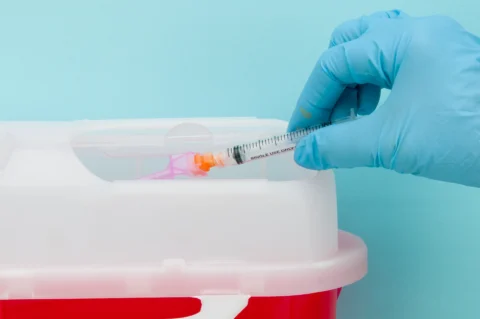The hypodermic syringe has been the preferred tool for injecting cosmetic and medical products for years and is an essential presence in every clinician’s office and the medical supplies of every healthcare worker. But while it’s one of the most ubiquitous pieces of equipment, the risk of needlestick injury may sometimes make it a liability in a healthcare setting.
So what are the essentials of hypodermic needle safety, and is there a better way to avoid injuries from medical devices like sharp tip needles? While there are certain accessories, attachments, and procedures that every clinician and healthcare worker can follow, one of the best ways to avoid injuries from an exposed needle is to avoid using needles as much as possible.
Why Hypodermic Needle Safety Is Crucial
The hypodermic syringe is one of the most versatile pieces of medical equipment available for use, being used on everything from intradermal injections, medication like insulin, clinical applications of injectables, and cosmetic procedures like Botox treatments. As a medical device, it’s simple enough that almost anyone can use it with enough training.
The most common danger associated with hypodermic needle safety is the threat of needlestick injury. While the injury itself may not be as serious as accidental incisions or blunt force trauma, it’s the usage of a hypodermic syringe that can make these injuries so dangerous. And while someone can be trained in the use of a syringe, safe disposal and first aid for needlestick injury are less common.
Because of the sharp design of the needle bevel, it’s easy for any contaminated needle to reach the bloodstream of a victim who accidentally pricked themselves. And while it’s easy to think that this only happens if the needle wasn’t put in a disposal container, the reality is that accidental needlestick injuries are more common than people may like to think.
This is dangerous because a conventional syringe can be exposed to a wide variety of deadly factors: contaminated blood, pathogenic body fluid, and even medications that can extensively injure both patient and healthcare worker alike. This is why it’s crucial to invest in a needle safety device if there are needles in the vicinity. Whether it’s a pen needle, an insulin needle, or any other injection needle, arrangements need to be made to reduce the likelihood of needle stick injury.
How Can Medical Professionals Reduce Needlestick Injuries?
One way to cut down on potential accidents involving a contaminated needle is to make sure the needle comes with the appropriate safety mechanism. Using Luer lock syringes, a safety needle with a single-handed activation plunger, or a retractable safety syringe is an excellent choice to make sure that the needle doesn’t make contact with anything it’s not supposed to.
Another way to reduce contact with a contaminated needle is to always throw used needles away in the proper disposal container. A sharps disposal container should always be within proximity to any procedures involving needles, and the disposal container should always comply with all needle safety requirements. Any medical devices that were used with the hypodermic needle should also follow a routine for safe disposal in case they were contaminated with blood or other body fluid.
However, these measures can only do so much to guarantee safety from needlestick injuries. The primary issue is that the very design of the needle itself makes it prone to injuries even if all safety precautions are met — which means that for practices that want to keep both patient and staff free from injuries and accidents, an alternative needs to be on hand at all times.
THE PERFECT NEEDLES FOR YOUR PATIENTS. CODE “20OFF” FOR 20% OFF YOUR FIRST ORDER!
FACE Med Store supplies countless doctors and clinics with all their supplies, including top-of-the-line hypodermic needles. Get your hypodermic needles at 20% off today!
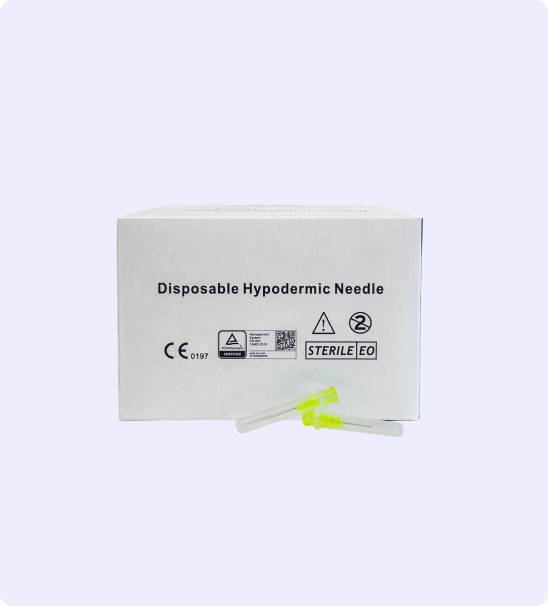
Blunt Tip Microcannulas: Removing the Risk of Sharps Injury
If needle stick injury is a consistent risk in the workplace, then switching to a medical device like a blunt tip microcannula can reduce the possibility of accidents. Because it lacks the sharp tip design of the traditional needle bevel and uses a different mechanism to achieve injection, blunt tip microcannulas are relatively risk-free medical devices that don’t require much in the way of safe disposal.
While still subject to the normal fixtures and procedures associated with needle safety requirements, using medical microcannulas can drastically help cut down on the other accessories needed to keep clinical applications injury-free. Their design makes it less likely for them to transfer blood, medication, or body fluid in the event of contact, and they don’t require a sharp container, a needle hub, or the usual needle safety device that prevents accidental needlestick injuries.
And while they can certainly be thrown away in a sharps disposal container like a conventional syringe, there’s less danger of injury from an exposed needle for both the patient and the injector. A safety mechanism of some sort like a safety shield and a sheath can still work for a medical microcannula, but the overall threat of sharps injury is extremely low compared to the traditional hypodermic needle.
Buy-High Quality Medical Tools and Supplies From FACE Medical Supply Today
While a conventional syringe may still be the best choice for many medical and cosmetic procedures (especially intradermal injections), the risk of accidental needlestick injuries is never far away when using a hypodermic needle. When a needle safety device is no longer enough, using an alternative like a medical microcannula can help every clinician and healthcare worker reduce the likelihood of needle stick injury.
FACE Medical Supply specializes in the supply of essential medical tools and supplies like the hypodermic needle, safety syringe, and retractable needle for cosmetic practices and clinics around the country. We also offer safer alternatives like blunt tip microcannulas, accessories like the safety shield or sharps container, and other safety devices for cosmetic and clinical applications.
For more information about our products and how they meet needle safety requirements, visit our product page or contact us today.
